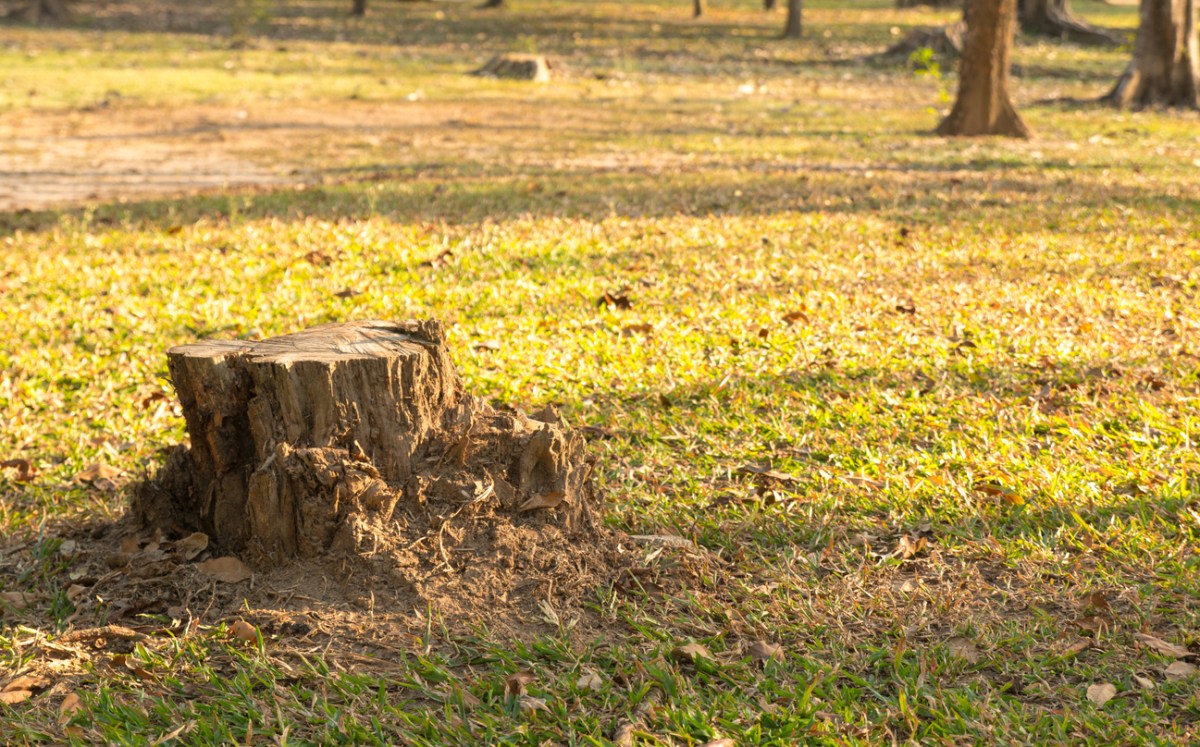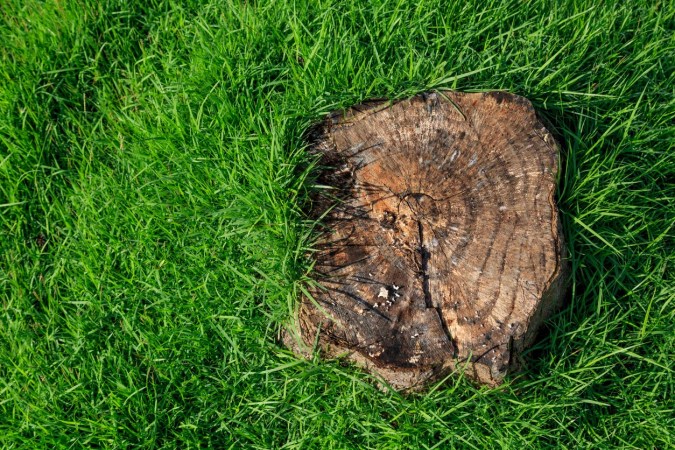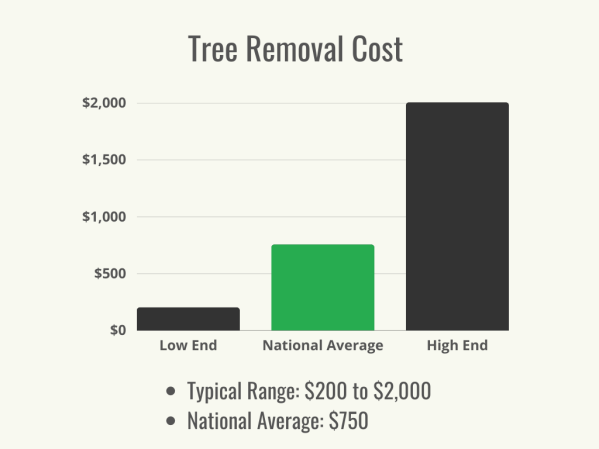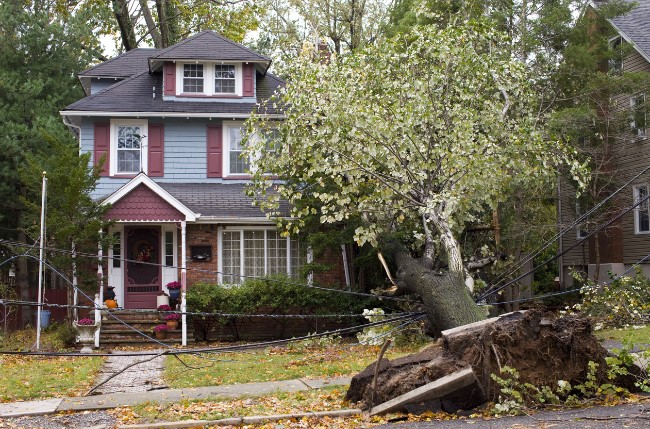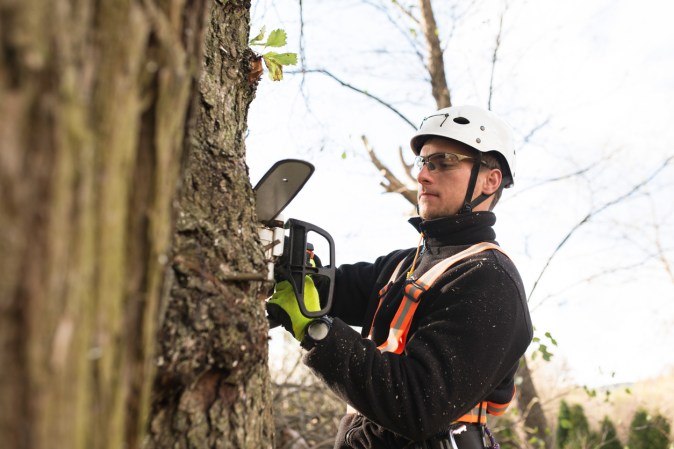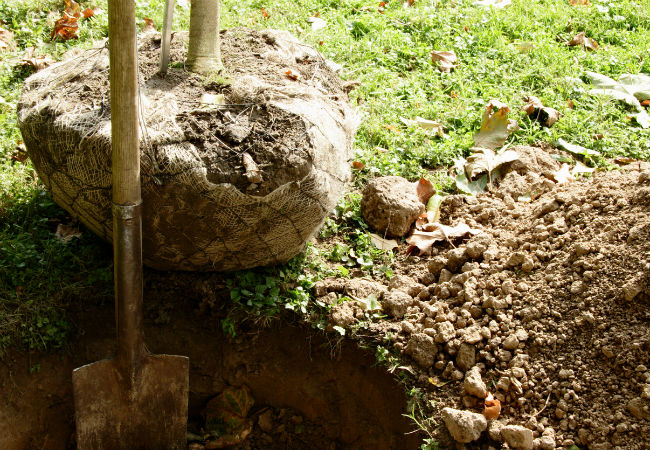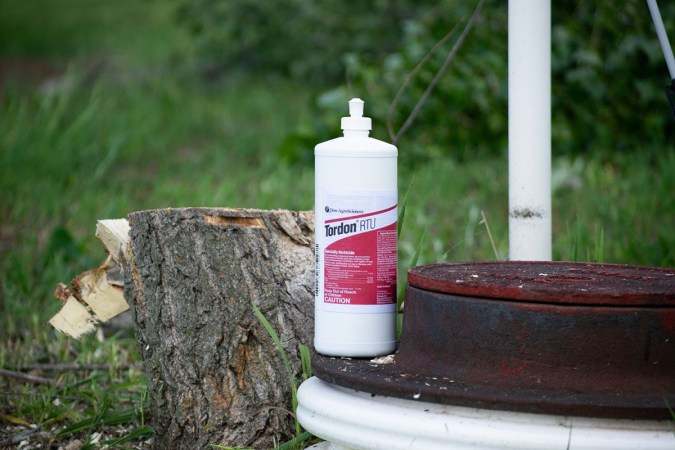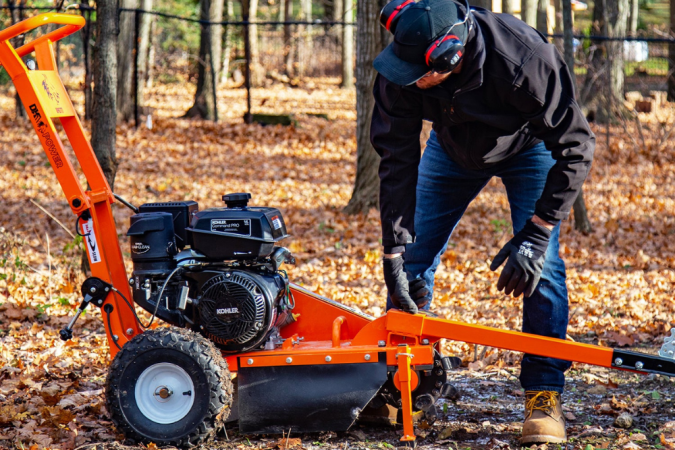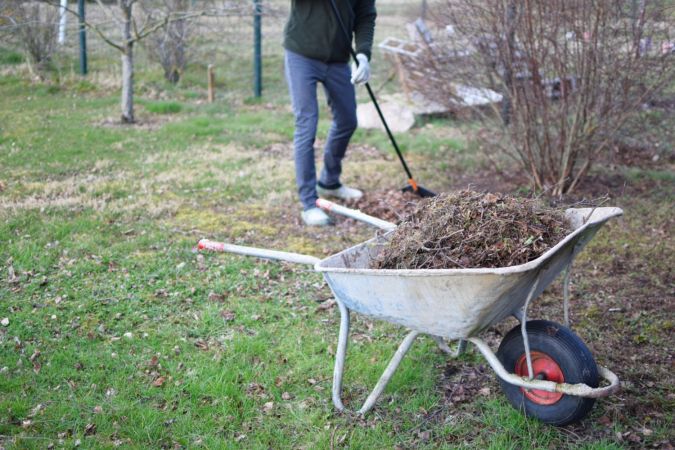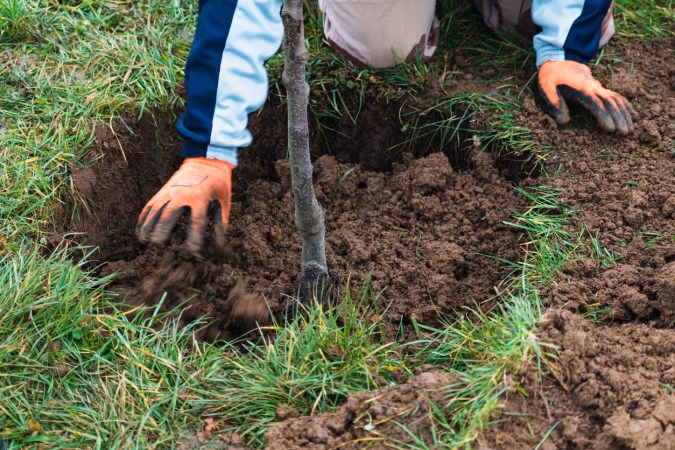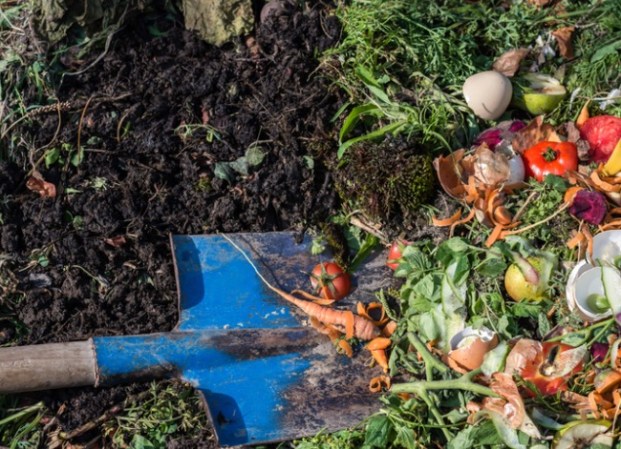We may earn revenue from the products available on this page and participate in affiliate programs. Learn More ›
Having a tree in your yard cut down can be a tricky and expensive process, but it’s especially frustrating when, after all the effort and expense, you’re stuck with an ugly stump. If this isn’t bad enough, sometimes the tree’s root system will continue to send up leafy shoots, and the stump will continue to grow long after the tree is cut down.
There are multiple avenues you can pursue to get rid of a tree stump, whether you just want to stop it from growing or remove it from your yard entirely. Whatever your situation, one of these solutions is sure to help.
Project Overview
Working Time: 2 hours to several days
Total Time: 4 hours to months
Skill Level: Intermediate
Estimated Cost: $10 to $200, depending on method
Before You Begin
Removing a tree stump isn’t a job for a fainthearted or impatient DIY-er. The fastest and most effective methods involve either heavy-duty tools or brute force, and the less physically demanding methods take time. If the task seems too daunting, you may just decide to find a creative way to use the stump. If you’re determined to get rid of the stump once and for all, there are many ways of going about it, including physically digging it up, attacking it with various natural remedies, or dousing it with salt or chemicals.
The best removal method for your situation will depend on local regulations, the size and location of the stump, your tolerance for physical exertion, your willingness to use herbicides in your yard, and how quickly you want the stump to disappear. Whichever method you choose, you’ll get the best results if your stump is cut as low to the ground as you can get it.
How to Kill a Tree Stump Naturally
If you’re not in a rush to get rid of a stump, you can kill it by weakening it and preventing it from resprouting. The following approaches help speed along the natural process of decay by eating away at the wood and making the stump easier to remove. If the long, slow approach works for you, try one of these easy home remedies that use ingredients you probably already have on hand.
1. Epsom Salt

Epsom salt is a naturally occurring compound whose components, magnesium and sulfur, are essential plant nutrients. In high concentrations, this mineral can draw moisture out of a stump. Epsom salt can kill a stump in a month or so, depending on the size of the stump.
SUPPLIES
Chainsaw
Safety glasses
Drill with spade bit
Epsom salt
Water
- Using a chainsaw, cut the stump as low as possible.
- Starting about 3 inches from the outside edge of the stump, drill 1-inch-wide holes, spaced 1 inch apart, into the top of the stump. Drill down as deep as possible.
- Fill the holes with Epsom salt and add enough water to saturate it without causing the salts to spill over. Sprinkle more Epsom salt around the base of the stump.
- Cover the stump with a tarp to prevent rainwater from washing the Epsom salt away.
- Wait a month or so while the Epsom salt cuts off the moisture supply to the roots, killing the stump.
- When the tree stump is dead (there should be no green wood and no shoots emerging), either dig it up, grind it down, or find a creative way to incorporate it into your landscape.
2. Rock Salt
Rock salt is another multipurpose product that can help kill tree stumps. Like Epsom salt, rock salt takes a month or so to do the job and kills by drawing out moisture. But use it with caution, as salt, or sodium chloride, will also kill neighboring plants. Avoid using this remedy if you have plantings near the stump or if you’re hoping to grow anything else in place of the stump.
SUPPLIES
Chainsaw
Safety glasses
Drill with spade bit
Rock salt
Soil
Mulch
Water
- Use a chainsaw to cut the stump as low as is safely possible.
- Drill 1-inch holes in the top of the stump, starting about 3 inches away from the edge. Keep the holes about 1 inch apart.
- Pack the holes with rock salt.
- Cover the stump with soil and top it with mulch.
- Pour water over the mulch, letting it seep down into the stump. Pour enough water to saturate the stump.
- Monitor the stump for a month or so. If you see green shoots coming up from the stump (an indication that it’s still alive), brush off the soil and mulch, refresh the rock salt, and repeat the process.
- When the tree stump is dead, either dig it up, grind it down, or find a creative way to incorporate it into your landscape.
RELATED: Buyer’s Guide: The Best Chainsaws We Tested This Year
3. Tarp or Plastic
SUPPLIES
Chainsaw
Safety glasses
Tarp or thick plastic sheeting
Wood chips, mulch, or grass clippings
Trees and the suckers that grow from their stumps need light to photosynthesize, so why not turn out the lights? To starve a tree of light, you’ll need a tarp or a thick sheet of black plastic and a large volume of organic waste, such as wood chips, fallen leaves, or grass clippings. Note that this method takes a long time, during which you’ll have an unsightly tarp covering the stump.
- Use a chainsaw to cut the stump close to the ground.
- Use the tarp to cover the stump and as many of the exposed roots as possible.
- Pile organic waste over the tarp, at least 12 inches deep.
- Wait for up to 6 months while the stump dies off.
- After the stump has decayed enough, either dig it up, grind it down, or find a creative way to incorporate it into your landscape.
How to Remove a Tree Stump
The quickest way to get rid of a tree stump is to physically remove it by digging, grinding, or burning it out. Physical removal methods, however, come with a number of challenges. Let’s take a closer look at each of these methods to learn why they may or may not be right for you.
1. Dig It Out
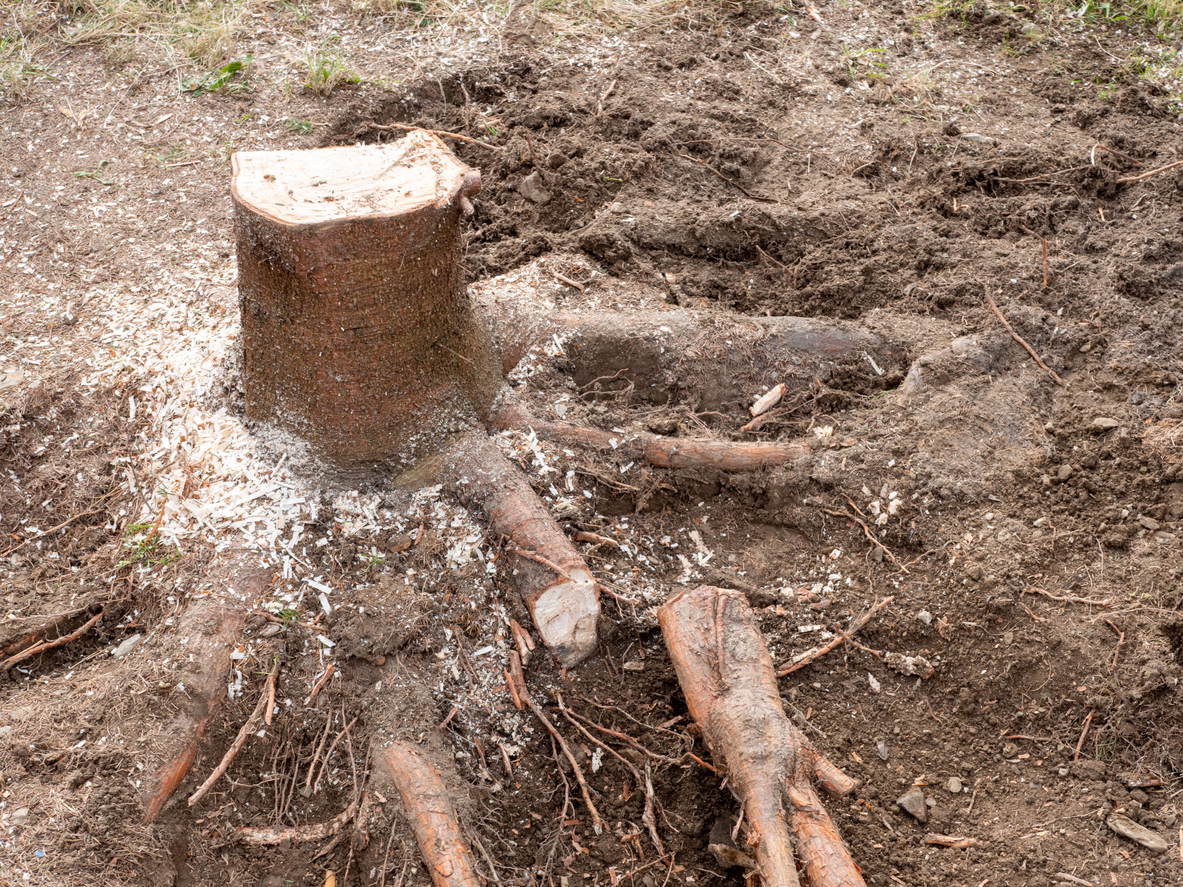
For a stump that’s up to about 12 inches in diameter, digging it out could be the most practical solution. Digging requires only basic hand tools, so you won’t have to rent large, pricey machinery. This is a labor-intensive approach, but it’s doable with the right tools and enough physical effort.
You’ll need a narrow spade with a mid-length handle that can dig down deep and maneuver easily around the root ball; a mattock to chop through roots and loosen compacted soil; and a digging iron that can get into deep or narrow spaces and pry up stubborn roots.
SUPPLIES
Chainsaw
Safety glasses
Spade
Mattock
Digging bar
- Using the chainsaw, cut the stump as low as is safely possible.
- Use the mattock to loosen the soil around the stump. As roots are exposed, chop through them with the mattock.
- Work downward and inward from all sides toward the taproot beneath the stump, using the digging iron as needed to loosen soil beneath the stump or pry the stump sideways to open up more working space.
- Once the taproot is exposed, chop through it using the sharp edge of the mattock.
- Remove the stump, its root ball, and any large roots.
RELATED: How Much Does Tree Stump Removal Cost?
2. Burn It
Before you consider this option, check local regulations first. Burning a stump may be against the law in your area, or may require a permit. If burning is permitted in your area, you’ll still want to consult your local fire department before getting started to make sure there are no burn advisories or bans in effect. Note that burning a stump may take longer than digging it out, and it won’t necessarily remove the roots below soil level.
Some DIY-ers suggest using kerosene or diesel fuel (never gasoline) for this task, but in our experience it’s best not to use any flammable liquids. Such fires can be hard to control and, unless the accelerant penetrates the wood for a few days, it tends to burn off without igniting the stump. The method described here relies on charcoal, although firewood and kindling can also be used.
SUPPLIES
Chainsaw
Safety glasses
Garden hose, connected to water supply
Spade
Mattock
Drill with spade bit
Charcoal
Charcoal chimney starter
Firewood/kindling (optional)
Black stove pipe (optional)
Metal bucket or drum with bottom cut out (optional)
Plan on attending the fire the entire time it is burning, which could be a day or longer, depending on the size of the stump, type of wood, moisture content, weather conditions, and other variables.
- Using a chainsaw, cut the stump as low as is safely possible.
- Clear the area of flammable materials and trip hazards within at least a 20 foot radius of the stump.
- Use a spade to dig around the stump, and loosen dirt and sever roots with a mattock to isolate the stump from the surrounding area.
- Use a drill equipped with a spade bit to drill holes into the top of the stump. Alternatively, cut a crosshatch pattern into the top of the stump with a chainsaw or carve out a “fire pit.” The goal is to encourage the fire to penetrate the stump.
- Connect a garden hose, make sure it reaches easily beyond the stump, and turn on the water supply so you’ll be able to quickly extinguish any flames that ignite outside the area of the burning stump.
- Start coals in the chimney starter. Place a length of pipe around the trunk (for a smaller stump) or a steel drum with the bottom cut out (for a larger stump).
- When the coals have begun to turn gray, carefully dump the hot coals over the tree stump, keeping them contained within the pipe or steel drum.
- Monitor the fire. Add more coals as needed, or let the coals burn out and then, after the stump has cooled, use the mattock to chip away at the burnt stump.
- Repeat the process (either starting a new fire or adding coals) until you’ve burned away as much of the stump as you can
- Use the spade and mattock to remove the remaining stump and roots.
3. Grind It
Grinding is the quickest and most efficient way to physically remove a tree stump. Depending on the size of the stump, grinding it out could take as little as 15 minutes or as much as a few hours.
You can call in a pro to do the job or you can rent a stump grinder from a home center for less than $200 per day. If you choose to do it yourself, be sure to wear protective gear, including safety goggles, hearing protection, long sleeves, and steel-toed work boots, and make sure you follow the manufacturer’s operating instructions.
Stump grinding can be dangerous for the grinder operator and for bystanders. The machine grinds down to a depth of between 9 and 18 inches, depending on the model, and it sends debris flying. Dangers include flying rocks and wood chips, and the possibility of accidentally hitting utility lines. For this reason, call 811, the national call-before-you-dig phone line, at least 2 weeks before your planned work day so utility company representatives can flag the locations of underground gas, electricity, water, and communication lines.
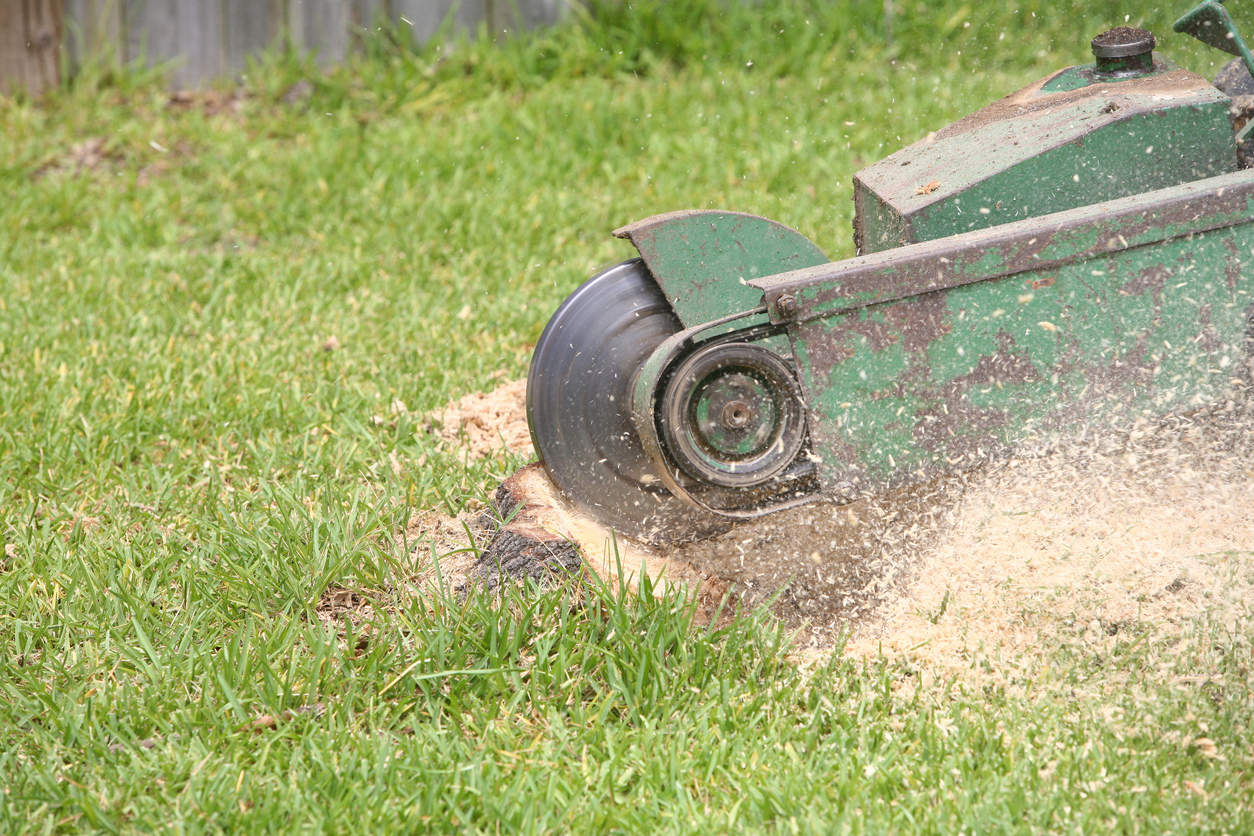
SUPPLIES
Chainsaw
Safety glasses
Ear protection
Work gloves
Spade
Stump grinder
Leaf rake
- To speed up the grinding process, use a chainsaw to cut the stump down as low as you safely can.
- Remove rocks and other debris from the area around the stump.
- Make sure no people or pets are standing closer than about 75 feet from the stump. Cover nearby windows and, if possible, move cars a safe distance away.
- Move the stump grinder close to the stump, start the machine, and grind from side to side, from the top of the stump down, working your way across the stump.
- Grind down 4 to 6 inches below grade, making sure to grind the surrounding roots.
- Even out the area and rake up the wood chips. You can use the chips as mulch or compost, or to line a garden path.
Killing a Tree Stump With Commercial Stump Killers
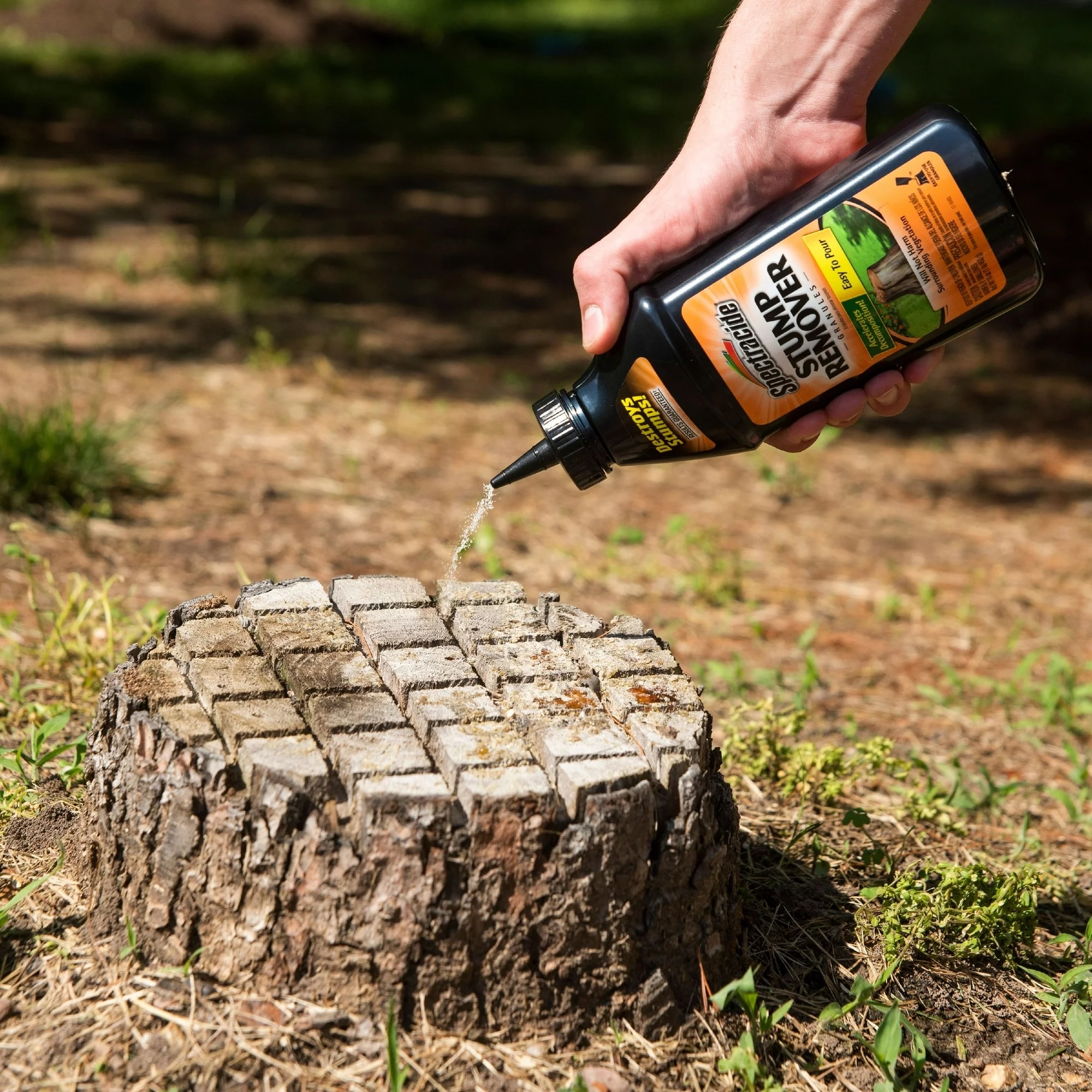
There are a vast array of chemicals that can kill stumps, some designed specifically for the task and others that are common multitaskers. Because many of them cause collateral damage to nearby plants, animals, or people, you should limit yourself to chemical solutions that are proven to work and can be safely used. Here are some common chemical approaches to removing or killing a tree stump.
One class of commercial stump killers relies on potassium nitrate to speed up a stump’s decay (Spectracide Stump Remover is an example). These products help break down the stump, making it porous. After a period of weeks or months (depending on the size of the stump), the stump can be broken up with an axe or shovel and removed. These products work best with dry stumps and are safe for the environment and fairly fast-acting.
If you are dealing with a stump from a freshly cut tree, start with a product like Ferti-Lome Stump Killer, one of a number of stump killers that use triclopyr, a systemic herbicide that kills the roots and eliminates growth of suckers. Apply these chemicals to the top of the stump within minutes of making the fresh cut so the product can be quickly absorbed into the remaining trunk and roots.
RELATED: I Used This Tree Control Herbicide to Kill a Stump: Did It Work?
Killing Tree Stumps: 3 Methods to Avoid
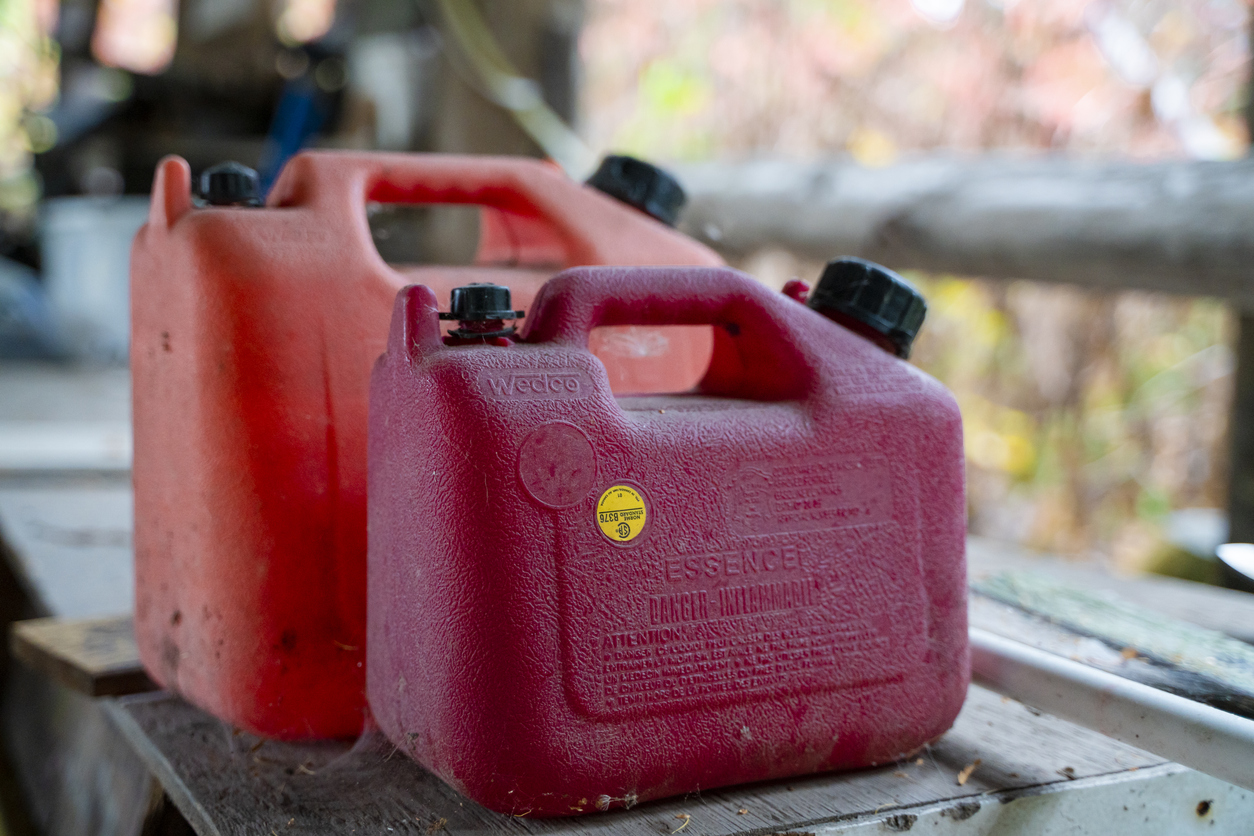
Your online searches for stump removal techniques are sure to turn up some ill-advised methods. Here are a few options you might encounter that we do not recommend—they are not good for your yard, or the environment.
1. Bleach
Bleach will certainly kill plants, but it isn’t sold as an herbicide and should not be used as one. The dangers of bleach outweigh its benefits. Applying bleach in the quantities needed to kill a tree stump would expose adjacent grass, shrubs, and other plants to toxic levels of chlorine, and would significantly raise soil pH. Instead, save your bleach for more appropriate uses.
2. Motor Oil
Motor oil is touted online as an effective tree stump killer, but there’s no good reason to use it. It doesn’t really save you money—a quart of motor oil costs just slightly less than Spectracide Stump Killer, a tested and proven product—and motor oil is bad for the environment and can contaminate the ground around the stump. Stick with less harmful methods.
3. Diesel
Diesel is a popular choice for burning away a stump because it’s more stable than gasoline and less likely to blow up. As noted above, however, flammable liquids won’t provide the long, steady burn required to eliminate a tree stump, and they are generally more harmful to the environment than more natural methods.
RELATED: Buyers’ Guide: The Best Stump Killers
FAQs
Q: Does tree stump remover kill grass?
Tree stump removers that contain potassium nitrate, such as Spectracide Stump Remover, do not kill surrounding vegetation. In fact, they accelerate the decay of the stump, breaking it down into usable plant nutrients. Tree stump killers that use the systemic herbicide triclopyr—for instance, Ferti-lome—are not designed to kill grasses, so when the products are used properly, nearby lawns should be safe.
Glyphosate, another systemic herbicide used in commercial stump killers, is nonselective—it kills whatever plants it comes in contact with. Roundup is an example of a glyphosate-based herbicide. We do not recommend using products that contain glyphosate.
Q: What can you put on a tree stump to make it rot?
Fungi are the most effective organisms for breaking down wood fiber, so plugging mushroom spawn into a stump is a good way to speed up its decay. The tarp method described above—spreading soil or mulch on top of the stump and covering it with a tarp—is another way of accelerating decomposition. If a stump is low enough to the ground, you can just cover it with soil and mulch and try planting over it.
Finally, if the stump is in a spot that would benefit from a colorful planter, you could just hollow the stump out a bit, fill it with soil, and plant flowers or greenery in it. This will not only add some charm to your garden, but also aid in the breakdown of the stump.
Final Thoughts

Unfortunately, there are no tricks for getting rid of a tree stump quickly, cheaply, easily, and without causing harm to neighboring plants. Every method has its drawbacks: Physical methods—digging, grinding, or burning—can be fastest, but they’re also labor-intensive. DIY home remedies and chemical methods can be slow, may require repeated treatments, and will still require some digging if you want the stump completely gone. The best approach is to review your situation and limitations, and choose the safest, most accessible method that will achieve your goal, whether it is the complete removal of the stump or simply accelerating its decomposition.

